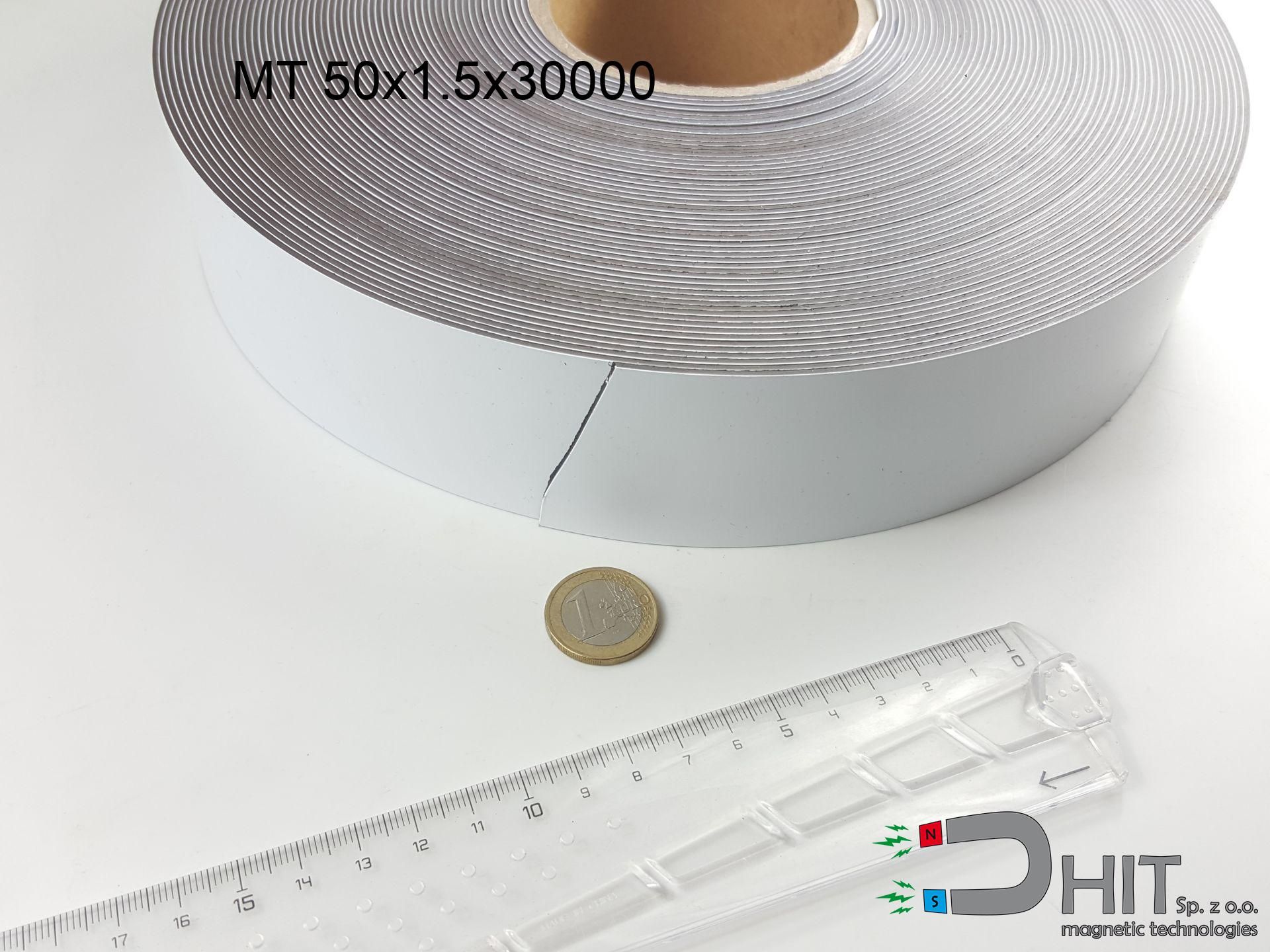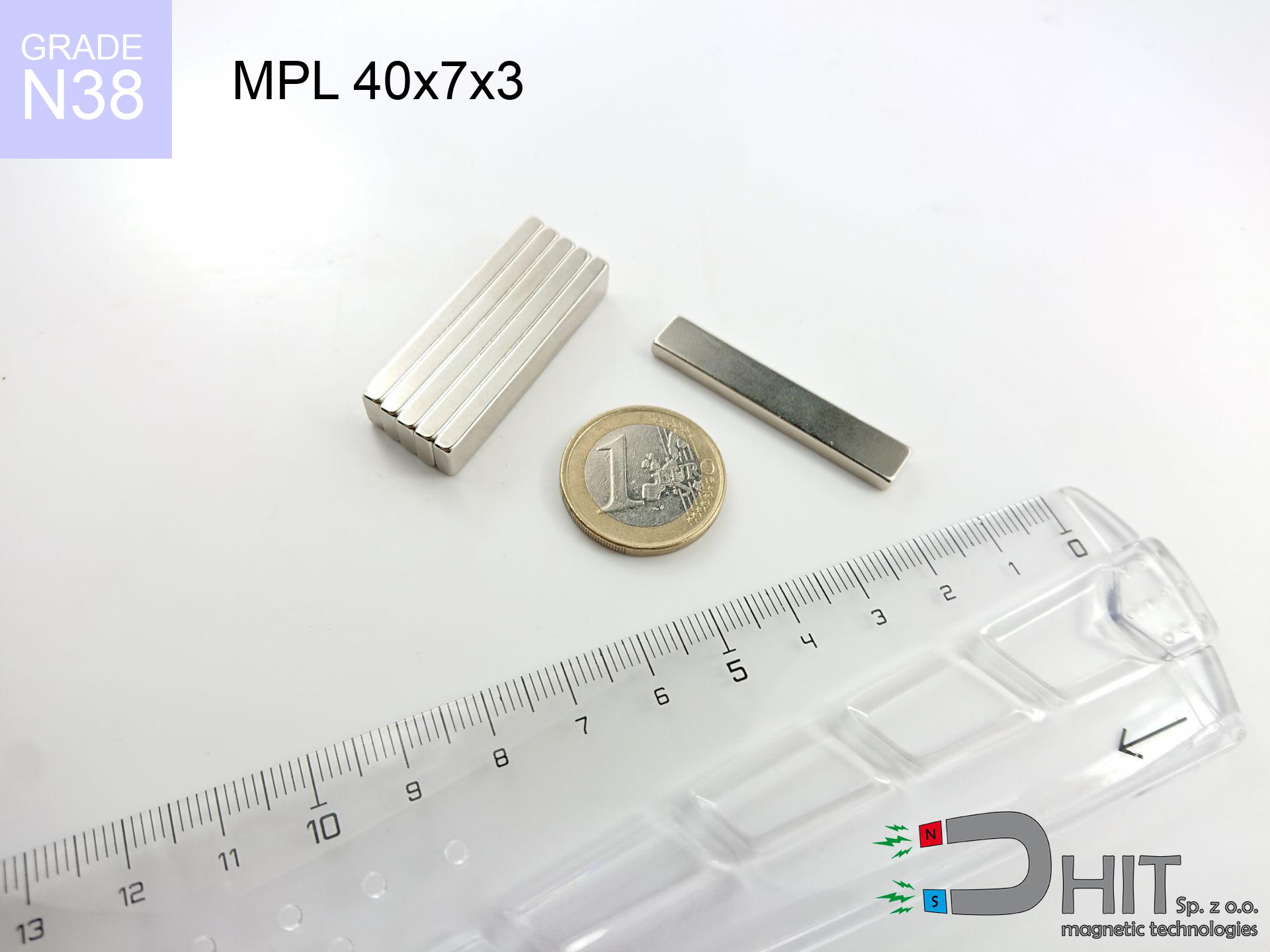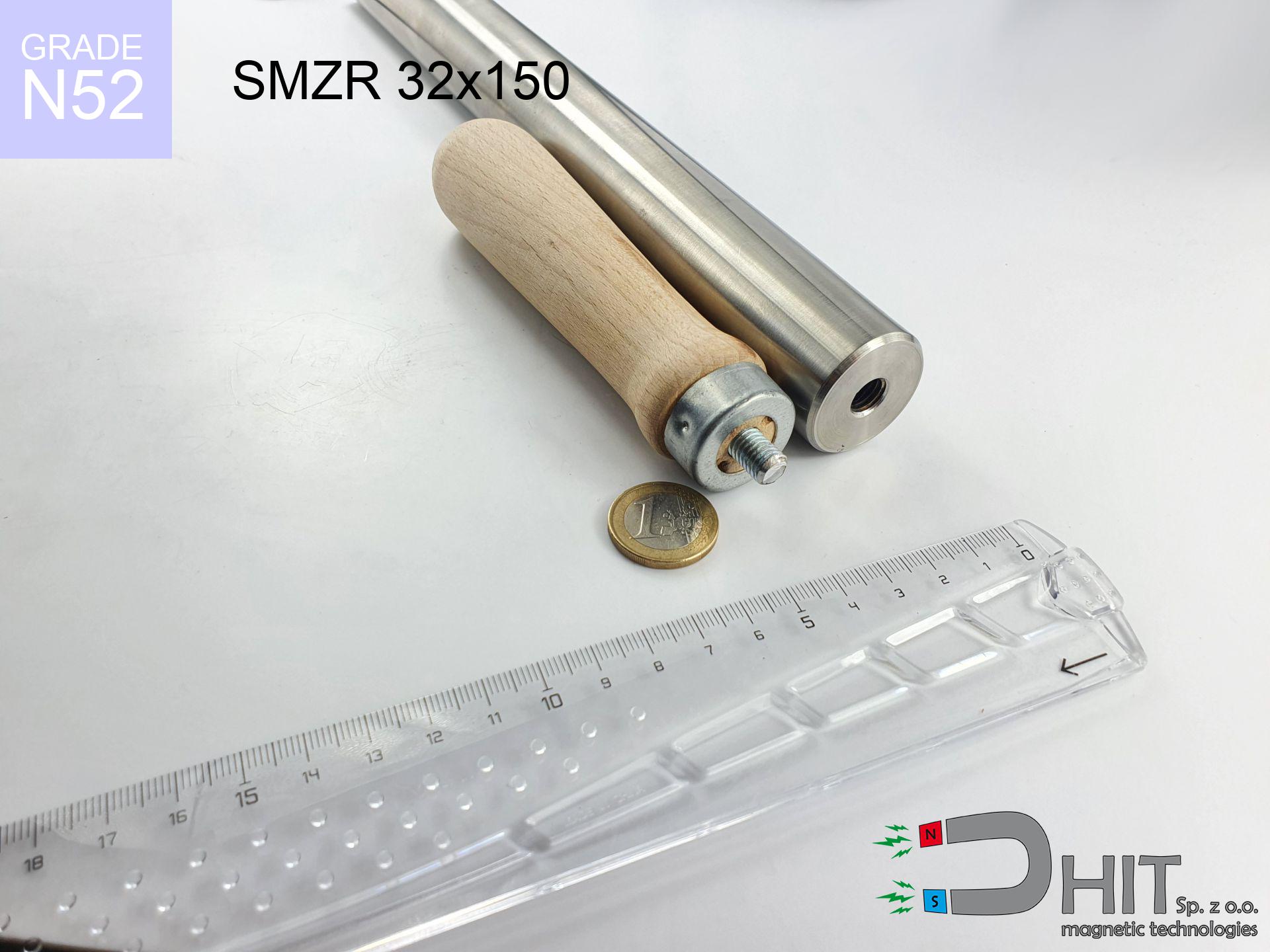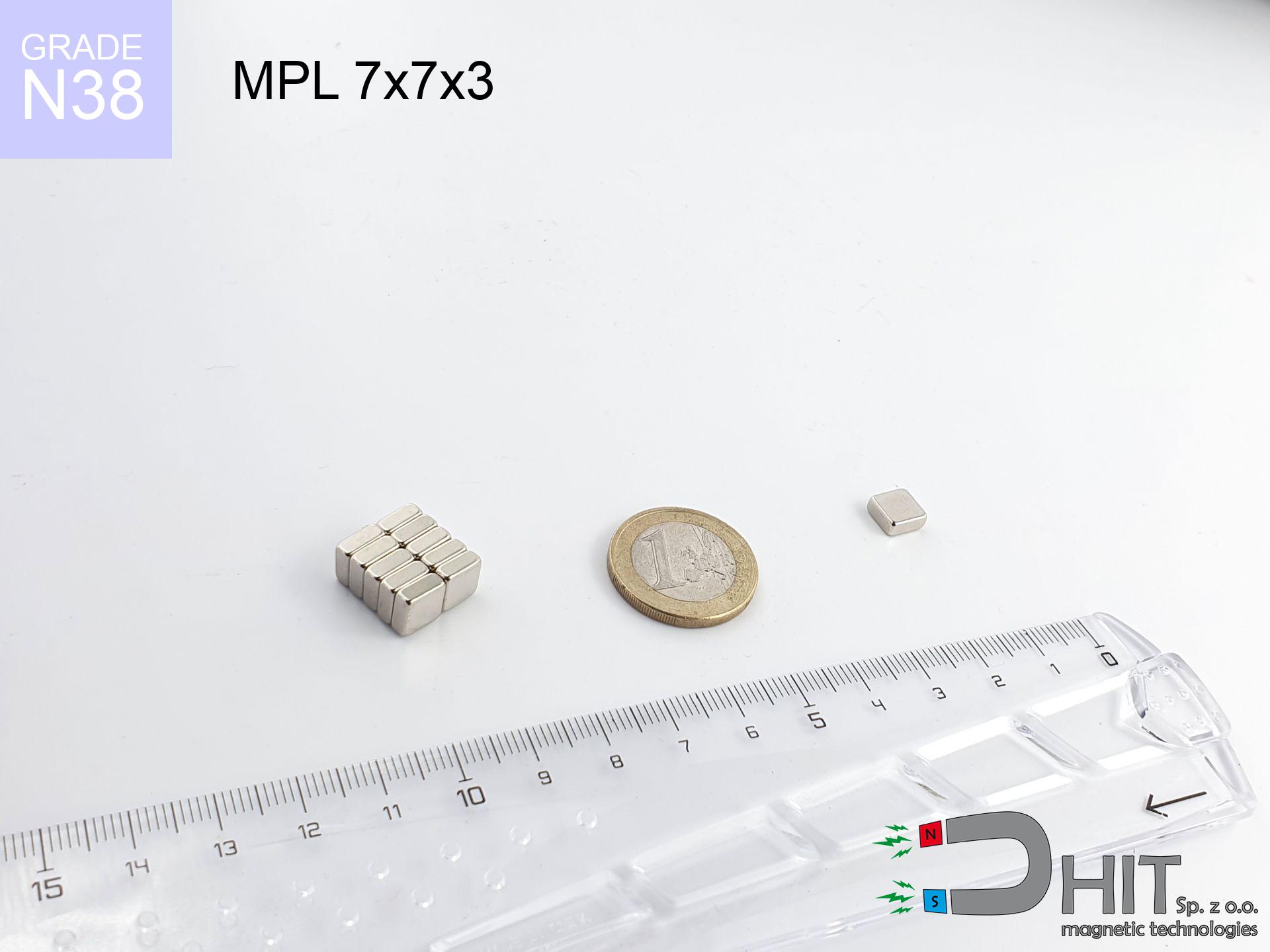MT 50x1.5x30000 - magnetic tape
magnetic tape
Catalog no 380510
length
50 mm [±1 mm]
Width
1.5 mm [±1 mm]
Height
30000 mm [±1 mm]
258.30 ZŁ with VAT / pcs + price for transport
210.00 ZŁ net + 23% VAT / pcs
bulk discounts:
Need more?Need advice?
Pick up the phone and ask
+48 888 99 98 98
otherwise send us a note via
contact form
our website.
Lifting power and form of a magnet can be verified using our
online calculation tool.
Orders placed before 14:00 will be shipped the same business day.
MT 50x1.5x30000 - magnetic tape
Specification / characteristics MT 50x1.5x30000 - magnetic tape
| properties | values |
|---|---|
| Cat. no. | 380510 |
| Production/Distribution | Dhit sp. z o.o. |
| Country of origin | Poland / China / Germany |
| Customs code | 85059029 |
| length | 50 mm [±1 mm] |
| Width | 1.5 mm [±1 mm] |
| Height | 30000 mm [±1 mm] |
| Manufacturing Tolerance | ±1 mm |
Physical properties of sintered neodymium magnets Nd2Fe14B at 20°C
| properties | values | units |
|---|---|---|
| Vickers hardness | ≥550 | Hv |
| Density | ≥7.4 | g/cm3 |
| Curie Temperature TC | 312 - 380 | °C |
| Curie Temperature TF | 593 - 716 | °F |
| Specific resistance | 150 | μΩ⋅cm |
| Bending strength | 250 | MPa |
| Compressive strength | 1000~1100 | MPa |
| Thermal expansion parallel (∥) to orientation (M) | (3-4) x 10-6 | °C-1 |
| Thermal expansion perpendicular (⊥) to orientation (M) | -(1-3) x 10-6 | °C-1 |
| Young's modulus | 1.7 x 104 | kg/mm² |
Chemical composition
| iron (Fe) | 64% – 68% |
| neodymium (Nd) | 29% – 32% |
| boron (B) | 1.1% – 1.2% |
| dysprosium (Dy) | 0.5% – 2.0% |
| coating (Ni-Cu-Ni) | < 0.05% |
Environmental data
| recyclability (EoL) | 100% |
| recycled raw materials | ~10% (pre-cons) |
| carbon footprint | low / zredukowany |
| waste code (EWC) | 16 02 16 |
Other offers
Advantages and disadvantages of rare earth magnets.
Pros
- Their power is maintained, and after approximately 10 years it drops only by ~1% (according to research),
- Magnets perfectly protect themselves against demagnetization caused by foreign field sources,
- The use of an aesthetic finish of noble metals (nickel, gold, silver) causes the element to have aesthetics,
- Magnetic induction on the working layer of the magnet turns out to be maximum,
- Thanks to resistance to high temperature, they are able to function (depending on the shape) even at temperatures up to 230°C and higher...
- In view of the potential of free forming and adaptation to specialized requirements, magnetic components can be created in a variety of shapes and sizes, which makes them more universal,
- Key role in future technologies – they are commonly used in HDD drives, electric motors, advanced medical instruments, also industrial machines.
- Relatively small size with high pulling force – neodymium magnets offer strong magnetic field in small dimensions, which allows their use in miniature devices
Weaknesses
- To avoid cracks upon strong impacts, we recommend using special steel holders. Such a solution secures the magnet and simultaneously increases its durability.
- Neodymium magnets decrease their strength under the influence of heating. As soon as 80°C is exceeded, many of them start losing their power. Therefore, we recommend our special magnets marked [AH], which maintain stability even at temperatures up to 230°C
- When exposed to humidity, magnets usually rust. For applications outside, it is recommended to use protective magnets, such as those in rubber or plastics, which secure oxidation and corrosion.
- We recommend a housing - magnetic mechanism, due to difficulties in realizing threads inside the magnet and complex shapes.
- Potential hazard to health – tiny shards of magnets pose a threat, in case of ingestion, which is particularly important in the context of child safety. Additionally, small components of these magnets can complicate diagnosis medical in case of swallowing.
- Due to neodymium price, their price is relatively high,
Holding force characteristics
Maximum magnetic pulling force – what it depends on?
- on a plate made of structural steel, optimally conducting the magnetic field
- with a thickness no less than 10 mm
- with a plane cleaned and smooth
- under conditions of gap-free contact (surface-to-surface)
- for force acting at a right angle (in the magnet axis)
- at ambient temperature room level
What influences lifting capacity in practice
- Clearance – the presence of foreign body (paint, dirt, air) acts as an insulator, which lowers capacity rapidly (even by 50% at 0.5 mm).
- Force direction – note that the magnet holds strongest perpendicularly. Under sliding down, the holding force drops drastically, often to levels of 20-30% of the nominal value.
- Substrate thickness – for full efficiency, the steel must be sufficiently thick. Paper-thin metal limits the attraction force (the magnet "punches through" it).
- Steel grade – the best choice is pure iron steel. Hardened steels may attract less.
- Surface quality – the smoother and more polished the surface, the larger the contact zone and higher the lifting capacity. Unevenness acts like micro-gaps.
- Thermal factor – high temperature reduces pulling force. Too high temperature can permanently damage the magnet.
Lifting capacity was assessed with the use of a steel plate with a smooth surface of suitable thickness (min. 20 mm), under perpendicular detachment force, in contrast under shearing force the holding force is lower. Moreover, even a slight gap between the magnet and the plate reduces the holding force.
Beware of splinters
Despite metallic appearance, neodymium is delicate and cannot withstand shocks. Do not hit, as the magnet may shatter into hazardous fragments.
Machining danger
Dust produced during cutting of magnets is self-igniting. Do not drill into magnets without proper cooling and knowledge.
Metal Allergy
Medical facts indicate that the nickel plating (standard magnet coating) is a potent allergen. If you have an allergy, prevent touching magnets with bare hands or select coated magnets.
Power loss in heat
Do not overheat. Neodymium magnets are sensitive to heat. If you require operation above 80°C, ask us about HT versions (H, SH, UH).
Keep away from electronics
GPS units and mobile phones are highly sensitive to magnetism. Close proximity with a strong magnet can decalibrate the sensors in your phone.
Finger safety
Danger of trauma: The attraction force is so great that it can result in blood blisters, crushing, and even bone fractures. Protective gloves are recommended.
Safe operation
Before starting, check safety instructions. Sudden snapping can break the magnet or injure your hand. Think ahead.
Cards and drives
Very strong magnetic fields can destroy records on payment cards, hard drives, and storage devices. Maintain a gap of min. 10 cm.
Danger to the youngest
Absolutely store magnets away from children. Risk of swallowing is significant, and the effects of magnets connecting inside the body are life-threatening.
Warning for heart patients
Life threat: Neodymium magnets can turn off pacemakers and defibrillators. Do not approach if you have medical devices.








